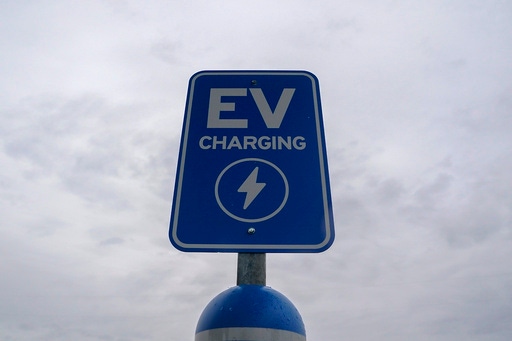Five facts about electric vehicles in 2024

FILE - A sign is displayed at an electric vehicle charging station, March 8, 2024, in London, Ohio. (AP Photo/Joshua A. Bickel, File)[ASSOCIATED PRESS/Joshua A. Bickel]
DETROIT (AP) — Electric vehicles had another whirlwind year around the globe, driven by buyers in China, and growth in parts of Europe and the United States, despite headwinds.
In a milestone for China, the world’s biggest auto market, EVs hit 50% of new car sales in July. That included pure battery EVs plus plug-in hybrid electric vehicles. Chinese companies such as BYD continue to gain traction worldwide with their inexpensive EVs.
Electric vehicles also made headway in Europe and the U.S. Uncertainty around purchase subsidies could complicate matters come 2025, especially under the incoming Trump administration in the U.S. But mainstream consumers remain interested in new models, longer driving ranges, better performance and lower prices.
The transition to electric vehicles is an important part of the shift to clean energy. Road transport accounts for around one-sixth of all global emissions from energy, according to the International Energy Agency. Widespread EV adoption could significantly address climate change.
Here are five facts about EVs this year. Most of the data comes from consultancy Rho Motion.
The global EV market, including pure EVs and plug-in hybrids, grew by 25% year-over-year as of November.
Rho Motion estimates 15.2 million EVs had been sold worldwide ahead of the end of the year, and the International Energy Agency expected electrified vehicle sales to reach one in five cars sold globally. Most were in China.
Mexico sold roughly 5 times as many EVs this year than last, mostly from Chinese powerhouse automaker BYD, according to Rho Motion.
Because China’s population is so much larger, its 40% growth year-to-date translates to many more EVs than Mexico’s fivefold increase.
Other areas of note are the United Kingdom, which saw a roughly 17% increase year-to-date. That’s interesting to compare to France and Germany, which saw sales decline.
In Turkey, the EV market grew by almost 50% year-to-date, driven by Tesla entering the market last year and Togg, a Turkish auto company, ramping up its sales.
In Norway, which for years has been in first place for share of vehicles that are electric, 90% of new cars were EVs.
The best-selling pure electric vehicles were the Tesla Model Y, followed by the Tesla Model 3 — both globally and in the U.S., according to Rho Motion.
The Model Y SUV was released in 2020. Its base version today costs nearly $45,000.
The Model 3 was released in 2017. The least expensive version sells for around $42,000.
Both have been eligible for a $7,500 tax credit in the U.S.
Tesla’s market share stood at 17% of all electric cars across the globe through October, according to Rho Motion.
In the U.S., Tesla’s market share was 49% through October. That means the company still has the biggest EV market share. But its hold is shrinking as other auto companies combined sell a growing number of electrics. For example, GM, Ford, Honda and more are offering a wider variety of EVs at lower prices and sizes and are chipping away at Tesla’s longstanding lead.
Tesla remains the most valuable auto company in the world, with a market value of $1.4 trillion.
___
Alexa St. John is an Associated Press climate solutions reporter. Follow her on X: @alexa_stjohn. Reach her at ast.john@ap.org.
___
Read more of AP’s climate coverage at http://www.apnews.com/climate-and-environment
___
The Associated Press’ climate and environmental coverage receives financial support from multiple private foundations. AP is solely responsible for all content. Find AP’s standards for working with philanthropies, a list of supporters and funded coverage areas at AP.org.
Copyright 2024 The Associated Press. All rights reserved. This material may not be published, broadcast, rewritten or redistributed without permission.